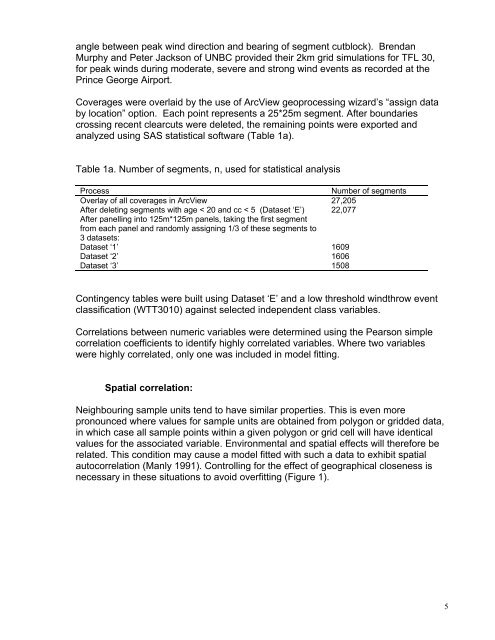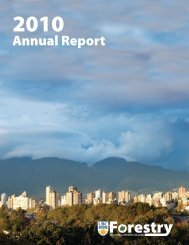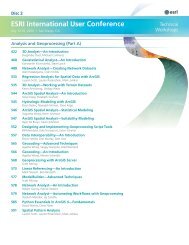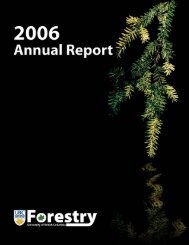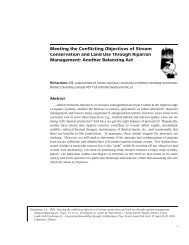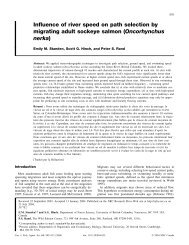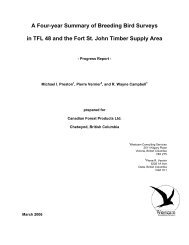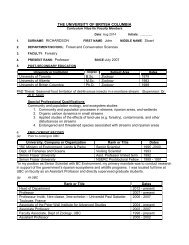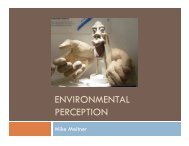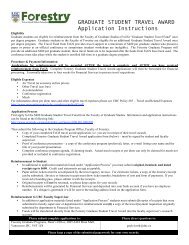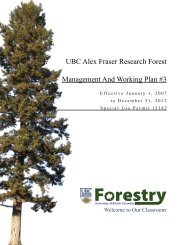Windthrow Hazard Mapping using GIS, Canadian Forest Products ...
Windthrow Hazard Mapping using GIS, Canadian Forest Products ...
Windthrow Hazard Mapping using GIS, Canadian Forest Products ...
You also want an ePaper? Increase the reach of your titles
YUMPU automatically turns print PDFs into web optimized ePapers that Google loves.
angle between peak wind direction and bearing of segment cutblock). BrendanMurphy and Peter Jackson of UNBC provided their 2km grid simulations for TFL 30,for peak winds during moderate, severe and strong wind events as recorded at thePrince George Airport.Coverages were overlaid by the use of ArcView geoprocessing wizard’s “assign databy location” option. Each point represents a 25*25m segment. After boundariescrossing recent clearcuts were deleted, the remaining points were exported andanalyzed <strong>using</strong> SAS statistical software (Table 1a).Table 1a. Number of segments, n, used for statistical analysisProcessNumber of segmentsOverlay of all coverages in ArcView 27,205After deleting segments with age < 20 and cc < 5 (Dataset ‘E’) 22,077After panelling into 125m*125m panels, taking the first segmentfrom each panel and randomly assigning 1/3 of these segments to3 datasets:Dataset ‘1’ 1609Dataset ‘2’ 1606Dataset ‘3’ 1508Contingency tables were built <strong>using</strong> Dataset ‘E’ and a low threshold windthrow eventclassification (WTT3010) against selected independent class variables.Correlations between numeric variables were determined <strong>using</strong> the Pearson simplecorrelation coefficients to identify highly correlated variables. Where two variableswere highly correlated, only one was included in model fitting.Spatial correlation:Neighbouring sample units tend to have similar properties. This is even morepronounced where values for sample units are obtained from polygon or gridded data,in which case all sample points within a given polygon or grid cell will have identicalvalues for the associated variable. Environmental and spatial effects will therefore berelated. This condition may cause a model fitted with such a data to exhibit spatialautocorrelation (Manly 1991). Controlling for the effect of geographical closeness isnecessary in these situations to avoid overfitting (Figure 1).5


